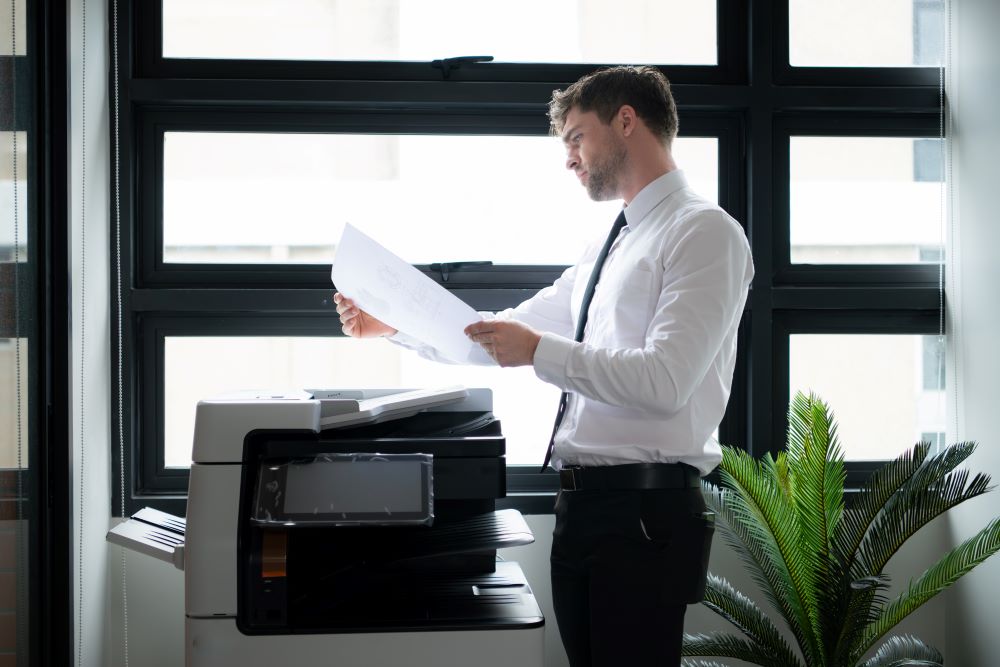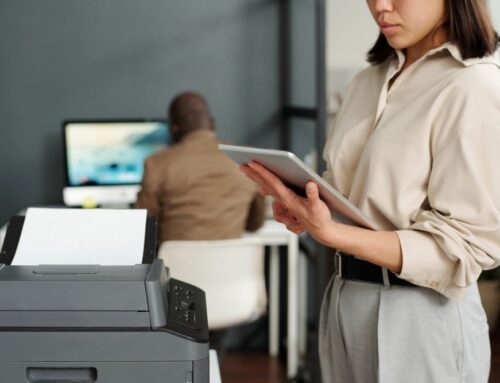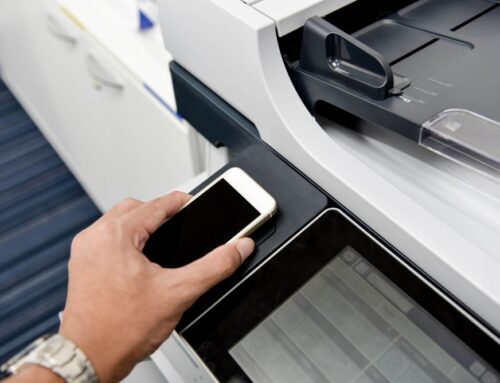The laser printer has seen many changes since its invention in the 1970s. Once a cutting-edge technology, it now sits comfortably in so many offices and homes.
But what makes it tick, and what separates them from other printers, like inkjets? This article will look closer at the surprisingly fascinating laser printers and explore how they’ve become so ubiquitous in places like Charlotte and far beyond.
How Does a Laser Printer Work?
It’s worth understanding the core principles that make a laser printer work to see what makes it distinct.
The Core Mechanism
A laser printer uses an electrostatic digital printing process. It employs a laser beam to pass over a negatively charged cylinder, often called a “drum,” to create an image. The drum then picks up electrically charged powdered ink that you likely already know as a toner and transfers it to paper.
The paper then heats up to permanently fuse the text or imagery. This way of printing is quite different from the old, original xerography in analog photocopiers, where the image comes to be by reflecting light off an existing document onto the drum.
The Science Behind the Laser
The laser in a laser printer is a highly focused beam of light that writes letters and draws pictures on paper. It’s fascinating how a beam of light turns digital data into legible images and text. But that’s because the laser doesn’t work alone. It interacts with other components to produce the print.
The laser selectively discharges certain areas of the drum, essentially “drawing” the image or text that will become the final print. This operation takes precision. Hence, the laser must be finely tuned for the print output to be as high-quality as possible.
The laser’s focus on tiny areas is what leads to such detailed images and crisp text. The laser essentially “paints” the drum with light, which then attracts the toner in the shape of your document or image. After that, the paper rolls past the drum, and the toner transfers and fuses onto it, completing the printing process.
The Evolution of Laser Printers
Laser printers evolved significantly since their introduction. They were initially costly, but memory chip prices have decreased over time, consequently making the printers cheaper. Nowadays, you can find laser printers that can print at resolutions as high as 2400 dpi at a decent price.
Laser printers have also become more compact and energy-efficient. Earlier models were often large and cumbersome, taking up significant office space. Today’s laser printers are much smaller and can fit on a desk, making them more suitable for office and home use.
Moreover, laser printers now come with features that were unimaginable in the early days. These capabilities include wireless connectivity, double-sided printing, and even scanning.
The Seven Steps of Printing
Laser printing involves seven steps: charging, exposing, developing, transferring, fusing, cleaning, and discharging.
Charging
When the printer receives instructions to… print, the printer’s drum gets negatively charged. The charge prepares the drum’s surface to interact with the laser beam.
Exposing
Next comes exposure, where the laser beam comes into play. It scans across the drum, neutralizing the negative charge in specific areas to form an electrostatic image. Think of it as the laser “drawing” on the drum.
Developing
During development, the drum rolls past a reservoir of toner. The negatively charged toner particles stick to the areas the laser has exposed, essentially “coloring in” the electrostatic image on the drum.
Transferring
Now, it’s finally time for the paper to get involved. When the printer inputs paper, it charges it with a positive charge. The toner particles are then transferred to the paper while it passes over the drum due to a simple positive-negative charge attraction.
Fusing
This step is where the toner is affixed permanently to the paper. The paper passes through heated rollers that melt the toner, fusing it into the fibers of the paper for a lasting print.
Cleaning
After fusing, any excess toner that didn’t transfer to the paper is cleaned off the drum. This way, stray toner doesn’t affect future print jobs.
Discharging
Finally, the drum is discharged, removing lingering electrical charge. Discharging prepares it for the next print job so that the process can start anew without trouble.
Why Choose a Laser Printer?
So, you’re in the market for a new printer and wondering why you should opt for a laser over other types. There are several compelling reasons for both personal and professional use.
This printer may be the missing piece for those running a Charlotte business or any enterprise anywhere. Let’s break down these advantages into three main categories: speed, quality, and cost-effectiveness.
Speed and Efficiency
A laser printer is fast. It can print up to 215 pages per minute, ideal for high-volume printing tasks like flyers, banners, and other promotional material.
Quality of Prints
The print quality is generally superior, especially for text documents. A laser printer can achieve resolutions of up to 2400 dots per inch (dpi).
Cost-Effectiveness Over Time
While the cost may be higher initially, laser printers tend to be more cost-effective as they’re faster and have a lower cost per page.
Laser vs. Inkjet Printer
So, how does a laser printer stack up against its counterpart, the inkjet printer? Both have merits, but they also serve different purposes.
Speed Comparison
Laser printers are generally faster, especially for text documents, while inkjet printers may pause every few lines.
Quality Showdown
Laser printers make higher-quality text, whereas inkjet printers are better for high-quality photos. Inkjet printers could be better if you often print in color.
The Cost Factor
Laser printers have a higher upfront cost but usually offer a lower cost per page. Inkjet printers, on the other hand, generally have a lower upfront cost but a higher cost per page.
Laser-Sharp Printing
The laser printer is certainly a reliable and efficient tool for office and home use. Its speed, quality, and cost-effectiveness make it a preference for many.
If you’re in Winston-Salem, Charlotte, or Greensboro and need a new printer, why not check out what Kelly Office Solutions has to give you? Feel free to browse the Kelly Office blog for more insights or contact us for one-of-a-kind services.






Leave A Comment
You must be logged in to post a comment.